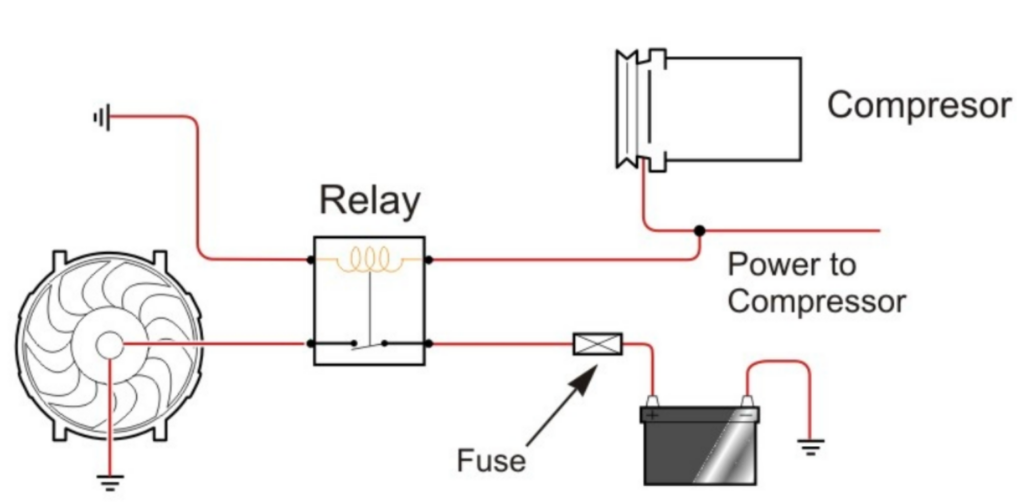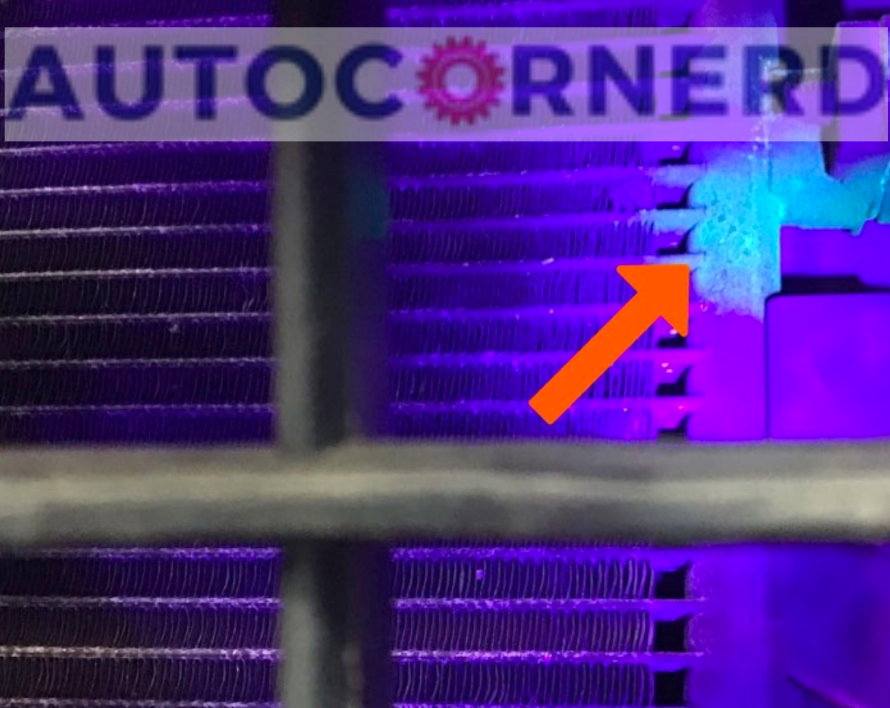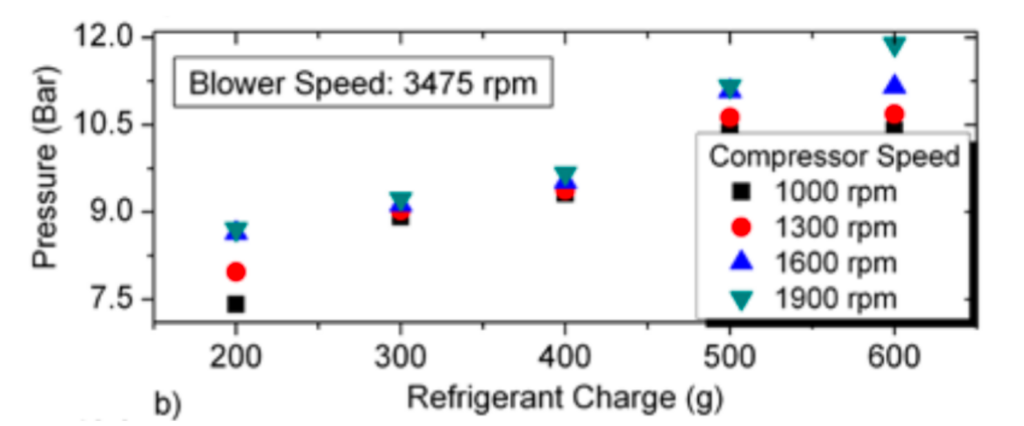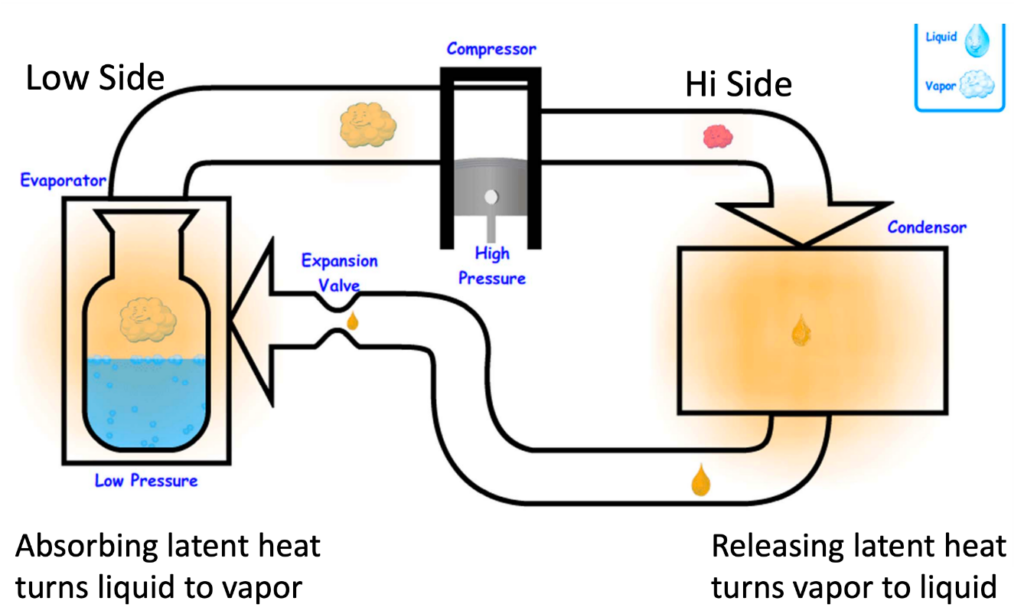Car AC Not Blowing Cold Air When Idle: 5 Causes + How To Fix?
When your car’s AC doesn’t blow cold air while idling, it’s often because of a bad cooling or condenser fan. Or there’s gunk clogging the condenser core. This blocks the airflow. So the AC stops making cool air. Also check the serpentine belt. The compressor clutch might slip if the belt is loose. This would make the AC act up when idling. Check the temperature gauge too. An overheating engine at idle also makes the AC work poorly.
Do you find yourself sweating and sweltering inside your vehicle when your air conditioner isn’t blowing cold air while your engine is idling at a stoplight?
At idle, your engine cooling system should be well-maintained so that car AC works properly when the car is not moving.
Fortunately, there are a few potential causes and solutions to help get your car AC blowing cold air again when idle.
If you have preliminary knowledge of working of car AC system, you can jump straight to the causes section.
How Does Car Air Conditioning System Work?
The air conditioning system in cars has some main parts. These parts work together to cool the air inside the car. The main parts are:
- Compressor
- Condenser
- Expansion device
- Evaporator
Compressor
The air conditioner cools the inside air using a special gas called refrigerant. The compressor squeezes this gas into a hot vapor. Squeezing the gas makes cooling when it spreads out later.
The more the compressor squeezes, the more cooling comes out later.
The AC compressor uses a magnetic clutch. The clutch makes a magnetic field. This magnetic field catches a drive plate on the AC compressor. The drive plate connects to the AC compressor pulley.
A serpentine belt gives the compressor power from the engine crankshaft pulley. The serpentine belt spins the AC compressor pulley. You can also read my guide on AC compressor clutch engages intermittently to learn more.
Condenser
The hot vapor then goes through the condenser. The condenser is metal coils that let heat out to the air outside. This cools the vapor back into a liquid.
Here is an important point many people mix up – the condenser and radiator are different parts. The radiator is part of the cooling system. The condenser is part of the AC system. It turns the hot, high-pressure vaporized refrigerant from the compressor into a liquid.
People also mix up the radiator fan and condenser fan a lot. The radiator fan is not part of the AC system. The condenser fan is on the passenger side. The radiator fan is on the driver’s side.
The condenser fan, also called a cooling fan, blows air over the condenser when the car is stopped or going slow. The speed of a condenser fan is controlled by the engine control module.
Expansion Device
After condenser, the refrigerant passes through the expansion device where liquid refrigerant expands to vapor, and temperature and pressure are lowered to a great extent to allow greater heat transfer between hot ambient air and refrigerant.
Evaporator
After the expansion valve, the refrigerant passes through the evaporator, where it absorbs heat from the air. As the refrigerant liquid absorbs the heat from the air, it evaporates into a gas and is sent back to the compressor to start all over again.
Causes Of Car AC Not Blowing Cold Air When Idling
Here are the following causes of a car AC not working properly when idle:
1. Faulty Condenser Fan
The condenser fan has an important job – blowing air over the condenser. This air cools down the refrigerant inside. Without the condenser fan, the AC won’t blow cold air when idling.
When driving fast, passing air cools the refrigerant enough to make cold air. But when idling, the condenser fan must circulate air since there is no airflow.
If the condenser fan isn’t working right, it can’t move air through. So the refrigerant won’t stay cold. When idling with a broken fan, the AC blows warm air instead of cold.
How to diagnose?
The condenser fan and compressor work together in the car’s AC system. The control system links them so when the compressor turns off, the fan also stops.
To check if the condenser fan runs, first be sure the compressor is on. Put the climate control in full AC mode, not AUTO. Listen to hear the compressor.
If you don’t hear the fan with the compressor on, try raising the RPMs to 2000 at idle. This may start the condenser fan if it was running slow.
If revving does not start the fan, it likely needs replacement. A slow fan can mean low refrigerant level or a bad sensor. Either way, it requires a closer look if it does not run at the higher RPM.
2. Bad Electric Connection Of Condenser Fan
Before replacing the condenser fan, you should also check the connectors of the condenser fan, condenser relay, and fuse.
In older engines, a condenser relay is activated as the AC compressor clutch is activated. So, you should check if the relay needs to be replaced. Next, you should also check the fuse of the condenser fan and AC compressor.

I found the following Youtube video helpful in understanding the electric circuit of car AC condenser fan.
To test condenser fan relay, you can watch this Youtube video:
After checking the relay and fuse, you should check the harness connector and terminals of the car AC condenser fan.
The following video is also good to test connector of the AC condenser fan:
3. Condenser Is Clogged

The AC condenser has many small fins. The fins let air pass through. When air passes through, heat moves from the air to the fins. This cools the air.
But when dirt, leaves, or dead birds block the fins, air can’t pass through well. So the fins can’t cool the air. When the air doesn’t cool, the AC doesn’t blow cold air.
How to fix?
To fix this, use a garden hose. Spray water on the condenser. This will wash away stuck stuff. It will clean the fins so air can pass through again. The condenser will work right. The AC will blow cold air again.
Also check carefully for dead animals stuck in there. They can block the airflow too. Remove any dead animals so air flows through the fins.
4. Low Refrigerant Charge
A low refrigerant charge in a car AC system will stop cold air from the AC at idle engine speed. The refrigerant makes the cooling system able to produce cold air. It is kept under pressure by the compressor.
When engine speed rises, the refrigerant pressure can also rise high enough to efficiently produce cold air.
With low refrigerant charge, the pressure is too low to cool the air. The evaporator can’t absorb heat from the air. So the air stays hot instead of getting cold from the AC at idle engine speed.
The car AC system is a closed loop keeping refrigerant under pressure. This forces the refrigerant to flow through the system.
If there is a leak in the system, the pressurized refrigerant escapes. This causes the refrigerant charge to become low.
Why do these happen?
The leaks in the car AC system can happen due to:
- Faulty seal of condenser, evaporator and compressor
- Damaged O-rings
- Worn-out hose
How to detect?
To find out if the car AC system is low on refrigerant charge, you should measure high-side and low-side pressures in the car AC system.
The optimal values of the high-side and low-side pressure of refrigerant depend on ambient temperature. You can find values from the R134-a ambient temperature and pressure chart. If the low and high-side pressures are too low, it means that the AC system is undercharged.
You can recharge the A/C system with a refrigerant that has a dye in it so you can trace all the hoses and connections when the system leaks down again.
Since most cars use R134a refrigerant, which is heavier than air, always check 360° around all fittings for refrigerant leaks.

5. Faulty Pressure Switches Or Sensors
The high-pressure and low-pressure switches are located in the car AC system and are responsible for maintaining a particular pressure in the AC system.
The high-pressure switch is normally closed until the high-side pressure reaches its limit or there is contamination i.e. water vapor and air in the refrigerant.
The low-pressure switch is a normally closed switch, which means that when the pressure is below the threshold, the switch will open and power will be cut to the compressor clutch and condenser fan.
The pressure switches send signals to the ECM to control the power supply to the condenser fan and compressor clutch.
If the pressure switches are bad and don’t send the ECM correct signals to the ECM, it may not even command the condenser fan to run.
You will find low-pressure switch between compressor and evaporator. This is called low pressure side of the AC system. On the other hand, you will find high-pressure switch between AC compressor and condenser. This is called high pressure side of the AC system.
How to test?
To test the AC pressure switch:
- Turn the AC on to full-bast mode.
- Connect one end of the multimeter’s test leads to the wire of the AC pressure switch and the other to the ground.
- Turn the multimeter to the Ohm setting.
- Start the car and turn on the AC.
- The multimeter should read zero as the pressure switch is closed when the AC is on and an open circuit when the switch is open. If the multimeter reads differently, the switch may need to be replaced.
Some pressure switches/sensors have three wires. One is a 5V wire, the second one is the signal wire from the ECM and the third is the ground wire. If there is something wrong with the values, you need to check the wiring.
Why Is Car AC Not Working Properly At Idle?
It is normal for some cars’ ACs not blowing cold air at idle because of low engine speed, and lesser airflow over the condenser. If your condenser fan is working properly, you will see that as you rev up your engine, your car AC will start blowing cold air at idle.
As your engine RPM increases, the AC compressor also runs at high speed, due to which it can compress the refrigerant to a higher discharge pressure. This also increases the performance of car air conditioning system.

A study was conducted to study the effect of refrigerant amount and compressor speed on the discharge pressure of the compressor. From the figure above, you can see that at higher compressor speeds, discharge pressure also increases.
Some First Hand Experiences Shared By Users In Different Communities
Our team conducted research across various online communities, forums, and subreddits to gather user comments and opinions on “car not ac blowing cold air when a car is at idle”.
User 1 says:
Experienced this in my Z3 last summer. The AC would only work when driving. I thought it was a compressor issue, but it turned out to be a faulty condenser fan. Once I replaced that, the AC worked perfectly at idle.
User 2 says:
My Miata’s AC was lukewarm at idle. I found out the issue was a bad AC relay. Swapped it out with a new one and the AC started blowing cold air even when the car was stationary.
User 3 says:
My LS430 had this problem last month. The AC would stop blowing cold air at idle. After some research, I figured out it was due to a failing compressor clutch. Had it replaced and now the AC works perfectly at all times.
User 4 says:
Had a similar issue with my A4. The AC would blow warm air only when idling. After a lot of troubleshooting, it turned out to be a dirty condenser. Cleaned it up and the AC was back to normal.

